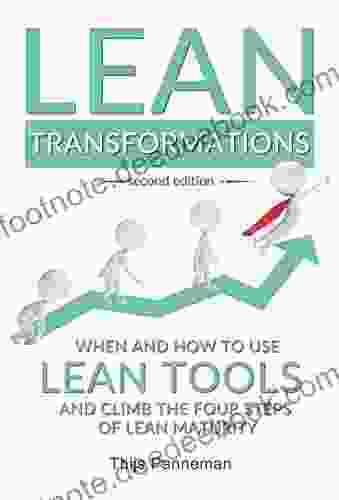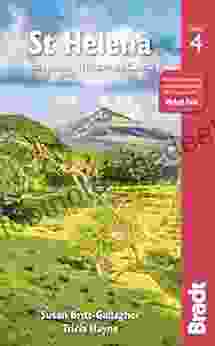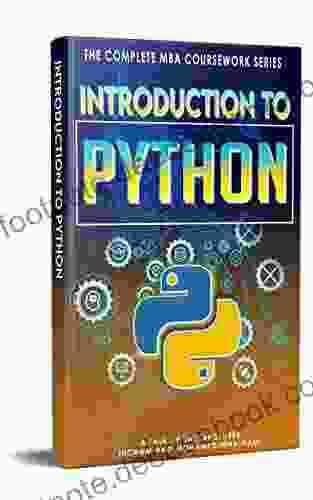Introduction to Python 102: A Comprehensive Guide for Beginners

What is Python?
Python is a high-level, interpreted, general-purpose programming language. It is known for its readability, ease of use, and extensive library support. Python is used in a wide range of applications, including web development, data science, machine learning, and artificial intelligence.
4.3 out of 5
| Language | : | English |
| File size | : | 9037 KB |
| Text-to-Speech | : | Enabled |
| Screen Reader | : | Supported |
| Enhanced typesetting | : | Enabled |
| Print length | : | 104 pages |
| Lending | : | Enabled |
Why Learn Python?
There are many reasons to learn Python. Here are a few of the most common:
- Python is a versatile language that can be used for a wide range of applications.
- Python is easy to learn, even for beginners with no prior programming experience.
- Python has a large and active community, which means that there is plenty of help and support available.
- Python is a powerful language that can be used to solve complex problems.
Getting Started with Python
The first step to learning Python is to install the language on your computer. You can download the latest version of Python from the official Python website.
Once you have Python installed, you can open a Python shell and start typing Python code. The Python shell is a simple interactive environment where you can enter Python commands and see the results immediately.
Data Types
One of the first things you need to learn about Python is data types. Data types define the type of data that a variable can hold. Python has a variety of data types, including:
- Integers: Integers are whole numbers, such as 1, 2, and 3.
- Floats: Floats are decimal numbers, such as 1.23, 4.56, and 7.89.
- Strings: Strings are sequences of characters, such as "hello", "world", and "Python".
- Lists: Lists are ordered collections of items, such as [1, 2, 3], ["hello", "world", "Python"], and [True, False, None].
- Tuples: Tuples are immutable ordered collections of items, such as (1, 2, 3),("hello", "world", "Python"),and (True, False, None).
- Dictionaries: Dictionaries are unordered collections of key-value pairs, such as {"name": "John Doe", "age": 30, "occupation": "Software Engineer"}.
Control Flow
Control flow refers to the order in which Python code is executed. Python uses a variety of control flow statements, including:
- If statements: If statements allow you to execute code only if a certain condition is met.
- Elif statements: Elif statements allow you to execute code only if a certain condition is met and all previous conditions have failed.
- Else statements: Else statements allow you to execute code if all previous conditions have failed.
- For loops: For loops allow you to iterate over a sequence of items.
- While loops: While loops allow you to execute code while a certain condition is met.
Functions
Functions are blocks of code that can be reused multiple times. Functions can take input parameters and return output values.
To define a function in Python, you use the def keyword. For example:
python def greet(name): print(f"Hello, {name}!")
The above function takes one input parameter, name, and prints a greeting message to the console.
Object-Oriented Programming
Object-oriented programming (OOP) is a programming paradigm that uses objects and classes to represent data and behavior.
In Python, classes are defined using the class keyword. For example:
python class Person: def __init__(self, name, age): self.name = name self.age = age
def greet(self): print(f"Hello, my name is {self.name}and I am {self.age}years old.")
The above class defines a Person object with two attributes, name and age, and one method, greet().
This article has provided a comprehensive overview of the basics of Python programming. By following the steps outlined in this article, you can start learning Python today and begin your journey to becoming a proficient Python developer.
4.3 out of 5
| Language | : | English |
| File size | : | 9037 KB |
| Text-to-Speech | : | Enabled |
| Screen Reader | : | Supported |
| Enhanced typesetting | : | Enabled |
| Print length | : | 104 pages |
| Lending | : | Enabled |
Do you want to contribute by writing guest posts on this blog?
Please contact us and send us a resume of previous articles that you have written.
 Book
Book Text
Text Story
Story Genre
Genre Reader
Reader Library
Library Paperback
Paperback E-book
E-book Magazine
Magazine Newspaper
Newspaper Paragraph
Paragraph Sentence
Sentence Bookmark
Bookmark Shelf
Shelf Glossary
Glossary Preface
Preface Synopsis
Synopsis Annotation
Annotation Manuscript
Manuscript Tome
Tome Bestseller
Bestseller Classics
Classics Narrative
Narrative Biography
Biography Encyclopedia
Encyclopedia Dictionary
Dictionary Narrator
Narrator Character
Character Librarian
Librarian Card Catalog
Card Catalog Stacks
Stacks Archives
Archives Periodicals
Periodicals Lending
Lending Special Collections
Special Collections Literacy
Literacy Study Group
Study Group Dissertation
Dissertation Reading List
Reading List Book Club
Book Club Karen Inglis
Karen Inglis Ralph Van Deman Magoffin
Ralph Van Deman Magoffin Janet Ahlberg
Janet Ahlberg Tricia Hayne
Tricia Hayne Eric R Severson
Eric R Severson Milton Mueller
Milton Mueller Thomas Harris
Thomas Harris Michael P Johnson
Michael P Johnson Zaragosa Vargas
Zaragosa Vargas Kevin Attis
Kevin Attis David Schoenbrod
David Schoenbrod Tea Krulos
Tea Krulos David A Bogart
David A Bogart Iain Stewart
Iain Stewart Beth Brown
Beth Brown S W Frank
S W Frank Roger Reynolds
Roger Reynolds Dan Robinson
Dan Robinson Jackie Dorman
Jackie Dorman Robert J Nash
Robert J Nash
Light bulbAdvertise smarter! Our strategic ad space ensures maximum exposure. Reserve your spot today!

 Jerome BlairLessons Learned While Swiping Right, Snapping Selfies, and Analyzing Emojis:...
Jerome BlairLessons Learned While Swiping Right, Snapping Selfies, and Analyzing Emojis:...
 Elias MitchellImmerse Yourself in Literary Excellence: Play Today Volume 60 Unleashes a...
Elias MitchellImmerse Yourself in Literary Excellence: Play Today Volume 60 Unleashes a...
 Efrain PowellAn Extraordinary Canine: The Inspiring Story of Dog Called Valentine Roxanne...
Efrain PowellAn Extraordinary Canine: The Inspiring Story of Dog Called Valentine Roxanne... George R.R. MartinFollow ·9.1k
George R.R. MartinFollow ·9.1k Paulo CoelhoFollow ·5.5k
Paulo CoelhoFollow ·5.5k Edison MitchellFollow ·3.9k
Edison MitchellFollow ·3.9k Arthur C. ClarkeFollow ·19.7k
Arthur C. ClarkeFollow ·19.7k Cason CoxFollow ·8.9k
Cason CoxFollow ·8.9k Felix CarterFollow ·12.3k
Felix CarterFollow ·12.3k Forrest ReedFollow ·14.6k
Forrest ReedFollow ·14.6k Evan SimmonsFollow ·12.5k
Evan SimmonsFollow ·12.5k

 Allen Ginsberg
Allen GinsbergUnveiling the True Meaning of Enough: A Comprehensive...
: In the relentless pursuit of progress and...

 Clay Powell
Clay PowellHawker Hunter: The Jet Fighter that Shaped British...
Nestled in the halls of aviation...

 Alec Hayes
Alec HayesWhen and How to Use Lean Tools and Climb the Four Steps...
Lean is a management...

 Trevor Bell
Trevor BellVolume of Charlotte Mason Original Homeschooling: A...
Charlotte Mason's original...

 John Parker
John ParkerAscending Tristan da Cunha: A Comprehensive Guide to...
Prepare yourself for an extraordinary journey...
4.3 out of 5
| Language | : | English |
| File size | : | 9037 KB |
| Text-to-Speech | : | Enabled |
| Screen Reader | : | Supported |
| Enhanced typesetting | : | Enabled |
| Print length | : | 104 pages |
| Lending | : | Enabled |








